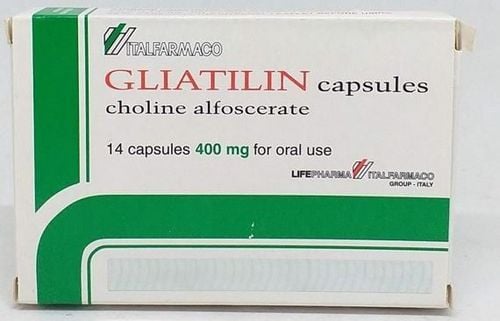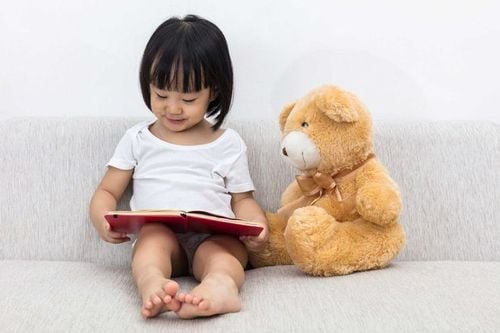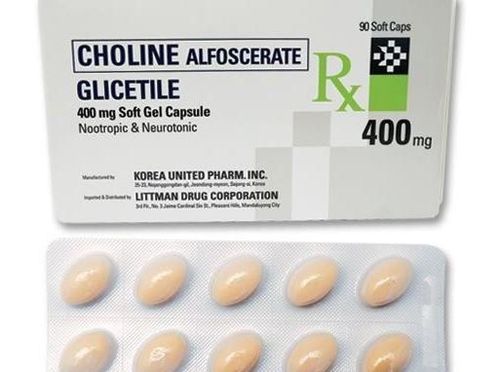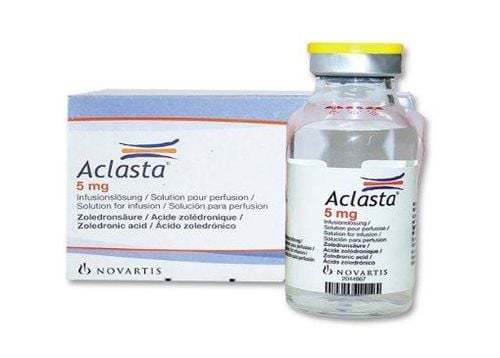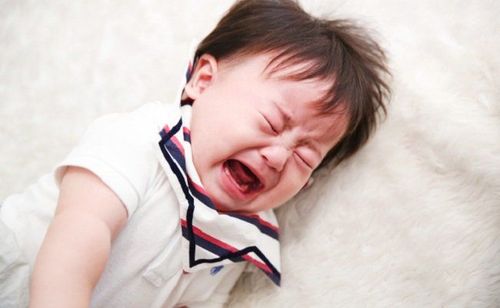This is an automatically translated article.
Most babies or toddlers have a fall to the head at least once in their first year of life. This is partly because infants cannot control head movements as well as adults due to underdeveloped neck muscles. Unlike adults, the center of gravity of the muscles is usually closer to the head than to the trunk. Add to that the fact that babies are learning all kinds of new skills like grabbing, rolling, walking, sitting, .... and they are bound to take some risks. So what to do when an infant or toddler falls and hits the head? This article provides helpful tips to help caregivers better understand this issue.
1. What to do when a child falls and hits his head?
Children, whether they are learning to walk, toddlers or have been walking for a long time are still capable of falling, sometimes the fall will become serious if not handled properly. Anytime a child or toddler experiences a fall, such as from a chair, bed, crib or table top, it is important for parents to thoroughly check for injuries, especially in dangerous areas such as the child's head, then the back, limbs. Parents need to make sure that the child does not have any serious injuries, no concussion in the head such as traumatic brain injury, brain hemorrhage, ... and injuries in the legs and arms such as broken hands and feet. Bones, broken bones,... The situation of children falling often happens, even in many cases of children falling seriously, but because the children's bones are young and soft, so they are not as easy to break as adults' bones. . After a child falls, parents should also observe the child's activities for any abnormalities. If children are still playing as usual, that is a good sign, parents can rest assured that children continue to play. But if after falling the child is fussy, has headaches, nausea, irritability... then immediately take the child to the doctor to be checked the internal parts of the body, especially the brain of the child. Letting children rest after a fall is also a way to help children be more comfortable, parents do not need to keep children awake after a fall.
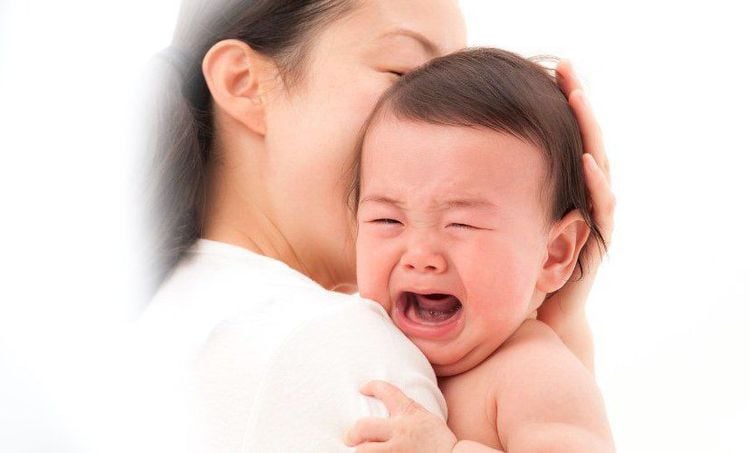
Sau khi trẻ bị ngã trẻ quấy khóc, đau đầu, buồn nôn phải đưa trẻ kiểm tra ngay
2. When should an ambulance be called after a child is hit?
After the fall, immediately take the child to the nearest medical facility if the child experiences any of the following:
The child loses consciousness: If the child is no longer breathing, immediately have someone call an ambulance, During that time, parents conduct newborn cardiac resuscitation (CPR) for children 12 months and older until the help of doctors and nurses. If the parents are alone at that time, give CPR to the child for 2 minutes, then call an ambulance for an ambulance. Bleeding: Parents should immediately treat the bleeding area and call an ambulance. When a seizure occurs When the child is unresponsive: If the child is breathing but does not respond, such as when the child is unconscious after a fall or the parent is unable to wake the child from sleep Fracture : Includes an obvious deformity in areas such as hands, feet not in alignment, wrists that are abnormally bent Possible skull fracture: skull bone is a soft, swollen area on the scalp, especially in the scalp the side of the head (above or behind the ears), a blood clot appearing in the whites of the eye, or pink fluid or blood coming from the child's nose or ears
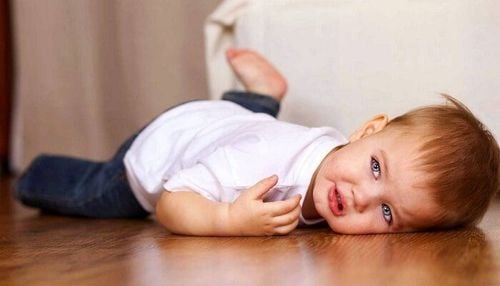
Trẻ xuất hiện cơn động kinh sau khi bị va đập cần gọi xe cấp cứu
A concussion: such as persistent vomiting or excessive sleepiness Depending on the age of the child for parents to assess a change in the child's gait, or technical problems speech, vision or motor skills. Brain injury: visible signs are changes in pupil size and abnormal eye movements or prolonged crying and screaming. The above cases are all potentially dangerous. If the child's life is in danger, parents need to quickly take the child to the nearest medical facility and talk to the doctor about the cause of the child's fall.
3. How to treat a bump on a child's head?
“Goose eggs” on the head are a common phenomenon, easily seen in toddlers. Although this bump can look scary, parents should not worry too much because it is not serious, most importantly, the child's brain is not damaged. When swelling occurs on the head, most of it protrudes because the baby's skull is located directly under the skin.
To help reduce swelling, parents can apply an ice pack or a bag of frozen beans to the bump for 2 to 5 minutes at a time, repeating for about an hour. Besides, mothers can also breastfeed, eat or read books during this time. It can help distract your child, forget about pain, and avoid chills and discomfort.
If the parents are still concerned about the child's swelling, they can consult the doctor about giving the child the appropriate dose of acetaminophen or ibuprofen, absolutely do not give aspirin to the child because this medicine can This leads to a rare but very serious condition called Reye's syndrome.
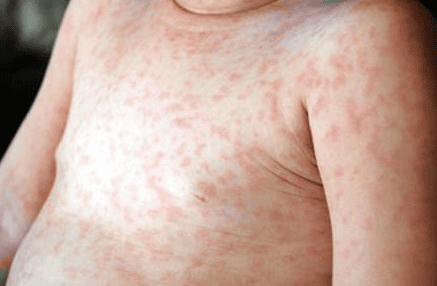
Điều trị vết sưng trên đầu của trẻ không được sử dụng aspirin ví có thể dẫn tới bị hội chứng Reye
4. How to prevent head injuries
Minor bumps and bruises are an inevitable part of developing motor skills and building independence. As long as young people have adult supervision and their play area is free of stairs, sharp objects and other hazards, most falls will not cause injuries. serious.
When children fall, bump, parents should not overreact. Rushing to the children's side will make the parents tired in the process of babysitting and the children themselves will become too cautious, not daring to comfortably participate in activities. If you see a child showing signs of discomfort, calmly encourage, comfort and encourage the child to get up. However, falls are also the number one cause of injury in children, and one-third of these accidents are preventable.
To keep children safe, parents can refer to the following ways:
Buffer sharp corners on furniture, table corners, cabinet corners,... Because these places are low, around Children should easily become the culprits causing collisions and purple bruises for young children. If possible, move furniture away from children's activities and play areas until the child can walk steadily. In places that often use water such as bathrooms and kitchens, parents should use plastic anti-slip pads so that children do not slip when using the bathroom or going through the kitchen area. For cloth mats to absorb water or wipe feet, parents can remove them until they are no longer entangled in the child during the activity.
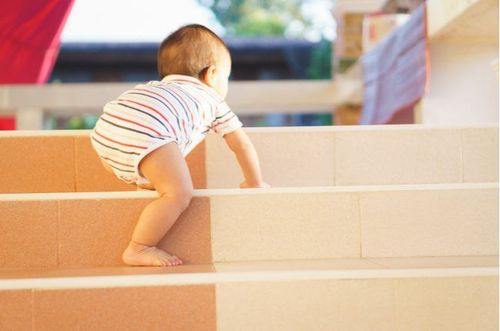
Không nên cho trẻ tự bò lên cầu thang để giữ an toàn cho trẻ
Keep children away from areas such as porches, overhead decks, and place mesh gates at the top and bottom of each staircase, kitchen area. Place protective sheets or acrylic glass (such as Plexiglass) on railings and balustrades if children can get over the rails. Move chairs and other furniture away from windows, railings, etc. Keep stairs in the house clear of objects that parents can trip over while holding babies. Use caution when carrying children or toddlers on the changing table. Some desks have straps, which can help parents secure the handles on the table, but they may not be enough to prevent falls, so never leave a child unattended on the table. big. Lower the baby's mattress as soon as the baby starts to stand up in the crib. When taking children to supermarkets and groceries, parents should pay attention to fasten their child's seat belt in the shopping cart. Absolutely do not leave the car even for a moment. For vehicles such as strollers, children's seats should also be secured with a child seat belt. Always monitor the child if the child begins to like to climb on furniture such as furniture, cabinets, parents should also have quick reflexes so that the child does not fall. For children to be healthy and develop well, it is necessary to have a nutritious diet in terms of quantity and quality balance. If children are not provided with adequate and balanced nutrients, it will lead to diseases of excess or lack of nutrients, which adversely affect the comprehensive development of children in terms of physical, mental and motor skills.
Parents should supplement their children with supportive products containing lysine, essential micro-minerals and vitamins such as zinc, chromium, selenium, and B vitamins to help fully meet their child's nutritional needs. At the same time, these essential vitamins also support digestion, enhance nutrient absorption, help improve anorexia, and help children eat well.
Parents can learn more:
Signs of zinc deficiency in children
Micronutrient deficiency and failure to gain weight in children
Please regularly visit Vinmec.com website and update useful information to take care of your child. Take care of the baby and the whole family.
Reference source: babycenter.com; healthline.com




